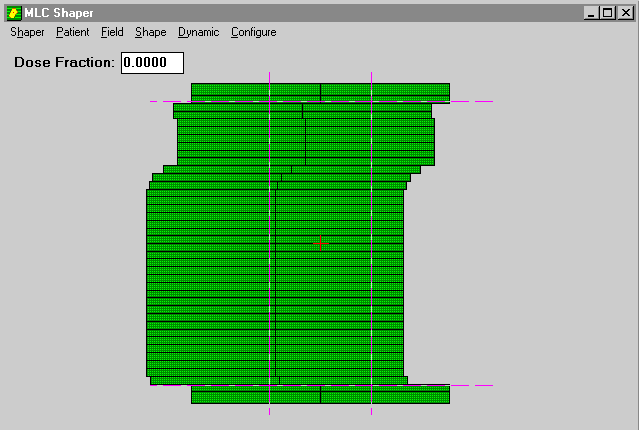Since Jan. 15, 1999 our Clinacs are able to deliver Intensity Modulated Radiation Therapy (IMRT) with the aid of the Dynamic MLC (DMLC), and verified by VARiS 1.4d. We cannot plan clinical treatments yet, since the planning system is still to come. But we (the physicists) are not unhappy with the situation because we have some time left to think about verification of IMRT (and to play around, see below). So I hope that when the time comes and the planning system is ready, we will have solved our dosimetric problems and established acceptable QA programs concerning the DMLC.
The DMLC includes the following modes:
All field files are simple ASCII files that can be edited with every text editor. But security is high: a CRC code (Cyclic Redundancy Check, sort of complicated checksum) at the end of the file secures the file handling process.
All this sounds very complicated. So I probably have to point out that when you do a DMLC treatment, you hardly notice any difference between a static MLC treatment and an intensity modulated treatment with the DMLC (except that the MLC window is blue). Neither do you have to deal with files, nor do you have to care about the kinematics of the leaves. It looks very easy.
Example: The Absolut DMLC
And this is how it works: six shapes, corresponding to the dose fraction 0.000, 0.300, 0.500, 0.500, 0.700 and 1.000 have to be specified. Note that two shapes have the same dose fraction (0.500). That means that the MLC moves between these two shapes without beam output as fast as possible (move-only segment). The interpolation between the other shapes is done automatically by the MLC controller, the user needs not care about that. I captured screen shots every 0.020, so there are 52 screen shots in the animation.
 |
Last modified: Feb.19 1999HK